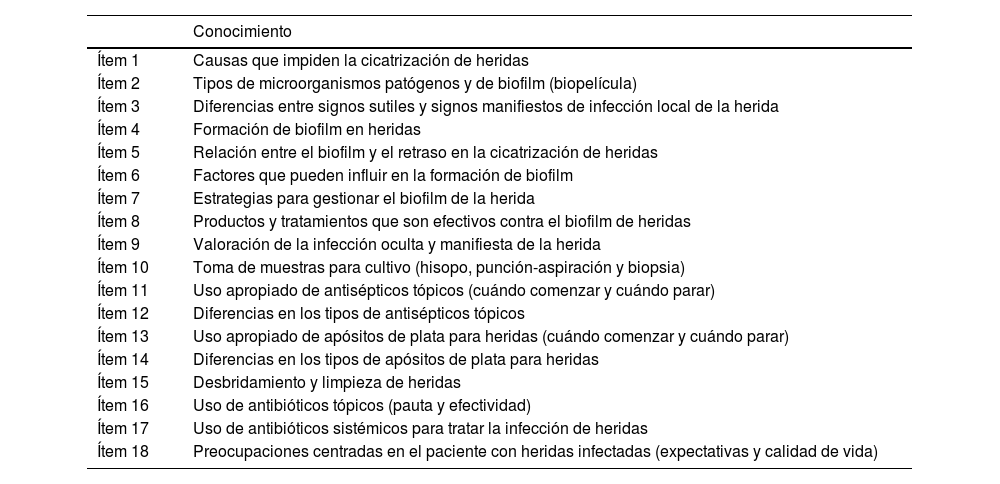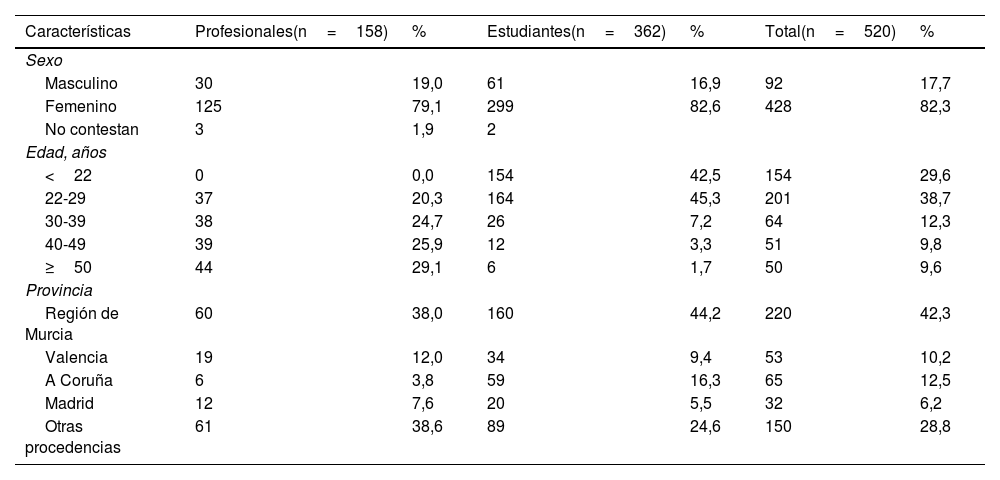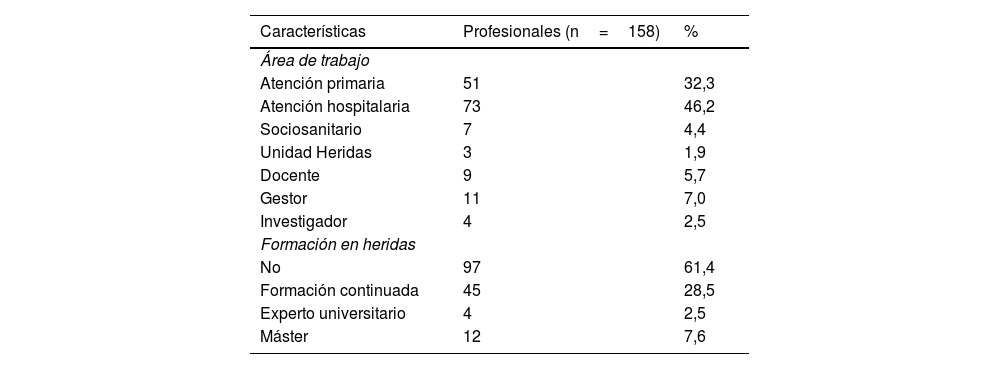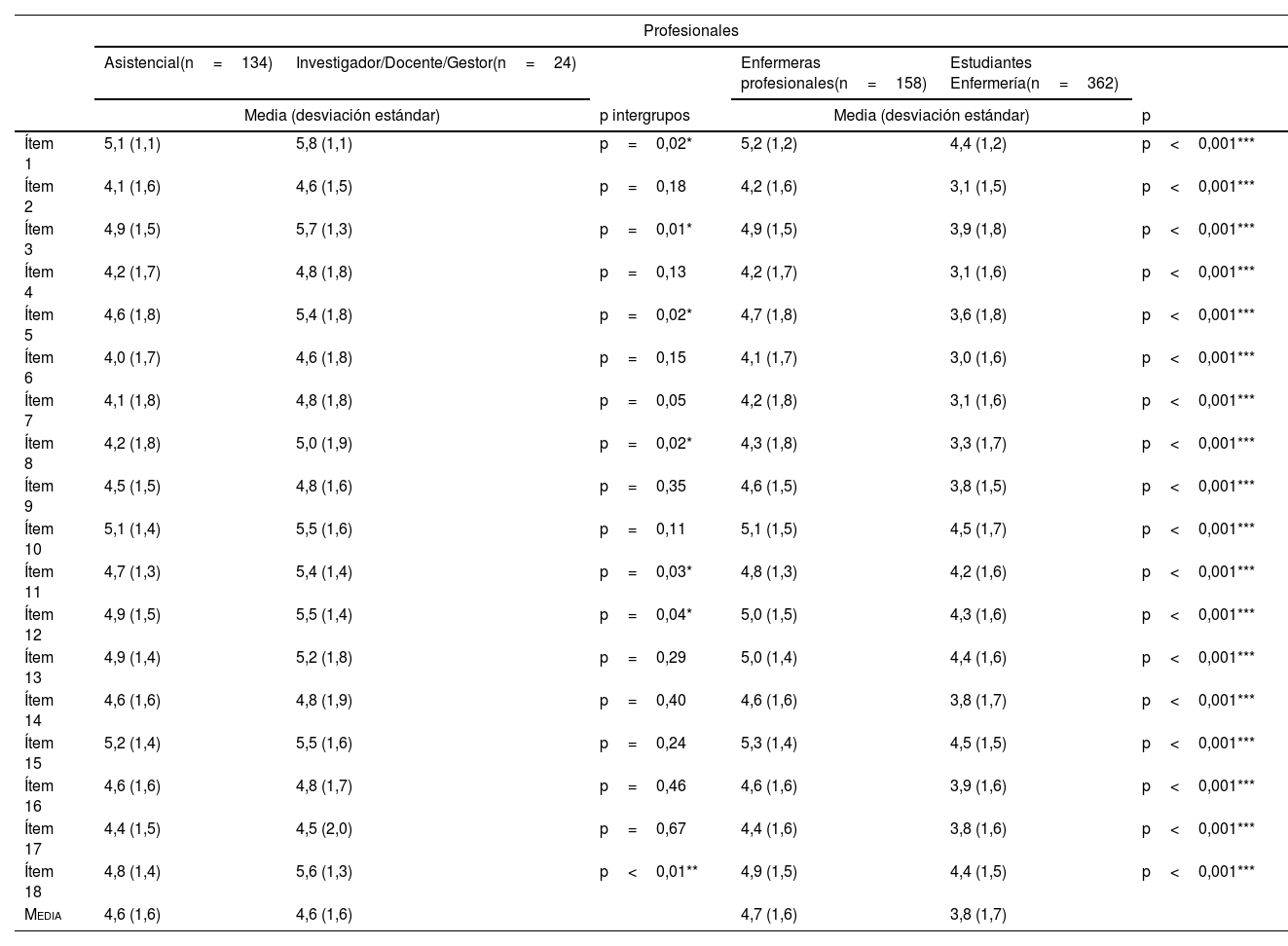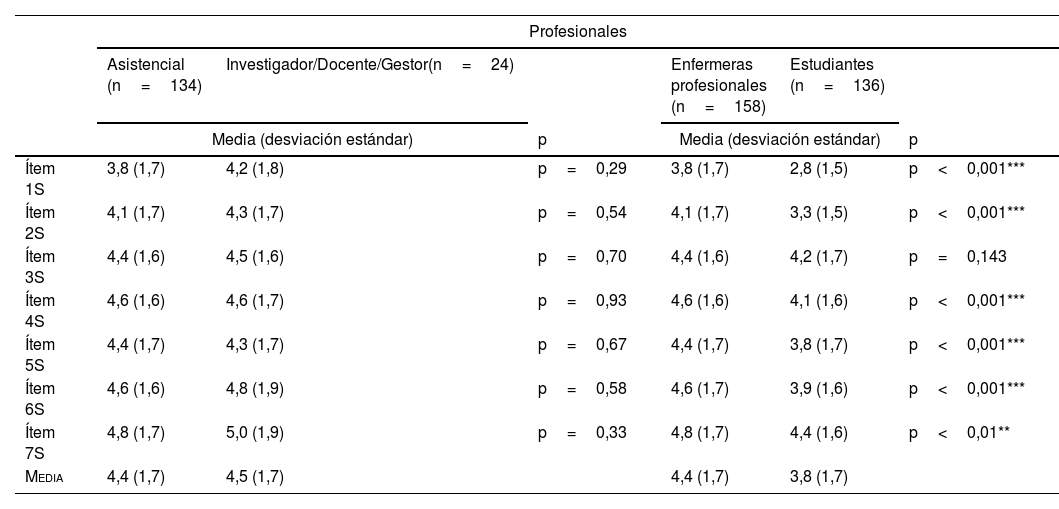Analizar la percepción y la satisfacción de enfermeras y estudiantes de Enfermería en España respecto a sus conocimientos en el manejo clínico de heridas infectadas.
MétodoSe llevó a cabo un estudio descriptivo transversal mediante un cuestionario ad hoc con 18 preguntas sobre conocimientos de heridas infectadas a enfermeras y estudiantes durante dos meses. Se pilotó con un grupo y se recogieron los datos de manera anónima y voluntaria.
ResultadosSe recopilaron 520 cuestionarios completos, incluyendo 158 de profesionales y 362 de estudiantes. Los profesionales mostraron mayor puntuación media de conocimiento que los estudiantes (4,7±0,13 vs 3,8±0,09; p<0,001). Los estudiantes tuvieron peores resultados en preguntas sobre biofilm y evaluación de signos de infección. Solo el 45% identificaron correctamente el papel del biofilm en las infecciones. Profesionales no clínicos mostraron mejores resultados en biofilm y en uso de antisépticos (p<0,05). En general, los profesionales estuvieron más satisfechos con sus conocimientos que los estudiantes (p<0,05).
ConclusionesProfesionales, especialmente con roles educativos o de gestión, tienen mayor percepción de conocimientos específicos. Profesionales y estudiantes presentan deficiencias en el manejo de infecciones de heridas, resaltando la necesidad de educación continua y revisión de estrategias de enseñanza. Se sugiere implementar una asignatura obligatoria para mejorar la calidad educativa desde pregrado en Enfermería.
To analyze the perception and satisfaction of nurses and nursing students regarding their knowledge of the clinical management of infected wounds in Spain.
MethodsA cross-sectional descriptive study was conducted using an ad hoc questionnaire with 18 questions on knowledge of infected wounds, divided into three sections, and was distributed electronically to nurses and nursing students over a two-month period. The questionnaire was piloted with a group of nurses and students, and data were collected anonymously and voluntarily.
ResultsA total of 520 completed questionnaires were collected, including 158 from professionals and 362 from students. Professionals demonstrated a significantly higher average knowledge score than students (4.7±0.13 vs 3.8±0.09; P<.001). Students performed worse in questions related to biofilm and assessment of subtle and manifest signs of infection in wounds. Specifically, only 45% of students correctly identified the role of bacterial biofilm in wound infections. Significant differences were observed in various items (P<.05) favoring non-clinical professionals over clinical professionals, particularly regarding biofilm and the use of topical antiseptics. Overall, professionals expressed significant satisfaction with their knowledge compared to students (P<.05).
ConclusionNursing professionals, especially those with teaching, research, and/or managerial roles, demonstrate a greater perception of knowledge in specific areas. However, both professionals and students exhibit gaps in perceived knowledge regarding the management of wound infections, highlighting the importance of continuous education and the review of teaching strategies to address these deficiencies. Implementing a specific mandatory subject is suggested to ensure the quality of nursing education in this area from undergraduate level.






